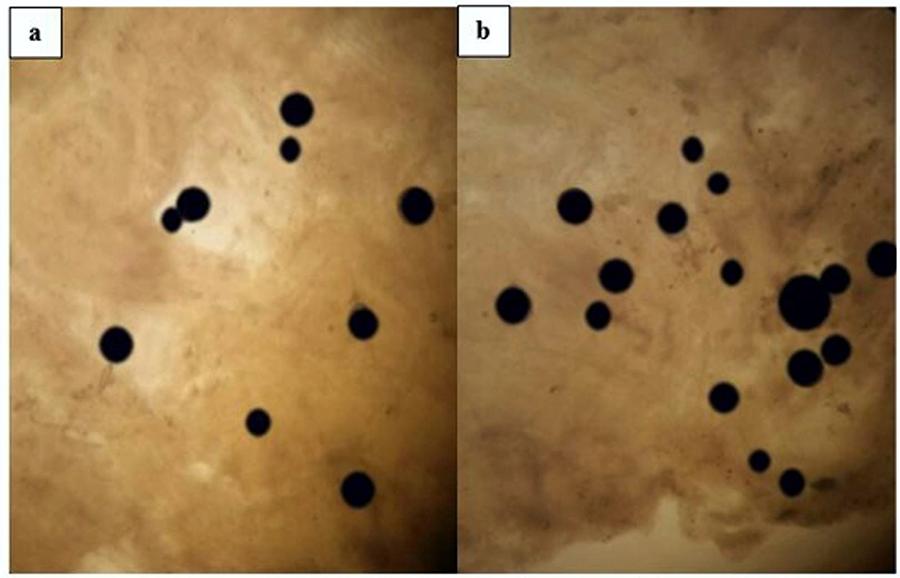Abstract
The coast of the semi-arid region of Brazil is known for the presence of large estuaries inhabited by numerous species of edible bivalve mollusks. The oyster C. rhizophorae is naturally found in estuarine environments along the Brazilian coast, fixed on substrates, mainly in the roots of mangroves. Protozoa of the genus Perkinsus are important parasites of marine bivalves, sometimes causing significant pathological damage throughout the world. This study reports the occurrence of parasites Perkinsus sp. in mangrove oysters from Porto de Mangue estuary (Rio Grande do Norte state) and Icapuí estuary (Ceará state), two estuaries of the semi-arid region of Brazil. In Porto do Mangue estuary, oysters were collected in December 2016, January and February 2017. In Icapuí estuary, oyster sampling occurred in September, October and November 2017. Two fragments of the gills were incubated in Ray's Fluid Thioglycollate Medium - RFTM. The ecological and parasitological parameters were calculated. Five of the ninety oysters collected in Porto do Mangue estuary were parasitized, which corresponded to a mean prevalence of 5.6%, and in Icapuí estuary 18 of the 120 oysters collected were parasitized, which corresponded to a mean prevalence of 15.0%. The intensity of infection by Perkinsus sp. ranged from very mild to mild.
Keywords:
mangroves; oyster; perkinsiosis; RFTM


